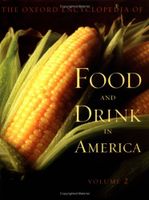Advertisement
Social Aspects of Tea Consumption
Appears in
Published 2004
A great deal of ceremony has always been attached to tea parties, much of it involving the presentation and handling of elaborate and delicate tea wares. The Dutch in New Amsterdam in the mid-1600s used teapots, silver spoons, and strainers, as well as “bite and stir boxes,” which contained partitions for lump and powdered sugar, the former held between the lips while sipping tea, the latter stirred into the cup.
Tea drinkers in the colonies used porcelain teawares from China, often blue and white but sometimes red and white or plain white. Chinese export teacups were smaller than coffee cups and had no handles. A full tea set around 1790 contained a teapot, twelve cups, twelve saucers, a milk or cream jug, a sugar bowl, and a slop bowl for pouring out the dregs before refilling a cup. Tea strainers, used to catch the tea leaves while pouring, were made, but larger punch strainers were often used instead. By the mid-1900s, straining was made unnecessary with the use of perforated metal tea balls suspended on chains. In the twentieth century, tea bags made of gauze or cheesecloth first came into use in restaurants, later gaining domestic acceptance. By the beginning of the twenty-first century, almost all hot tea was brewed from tea bags. Until prices fell and tea was stored in tin canisters, precious tea was kept fresh in airtight caddies made of fine wood, china, or silver. Silver tea sets were not common until the nineteenth century, and their use became more widespread after the Civil War, following the discovery of new silver mines in the West and the development of a cheaper silver-plating process.


